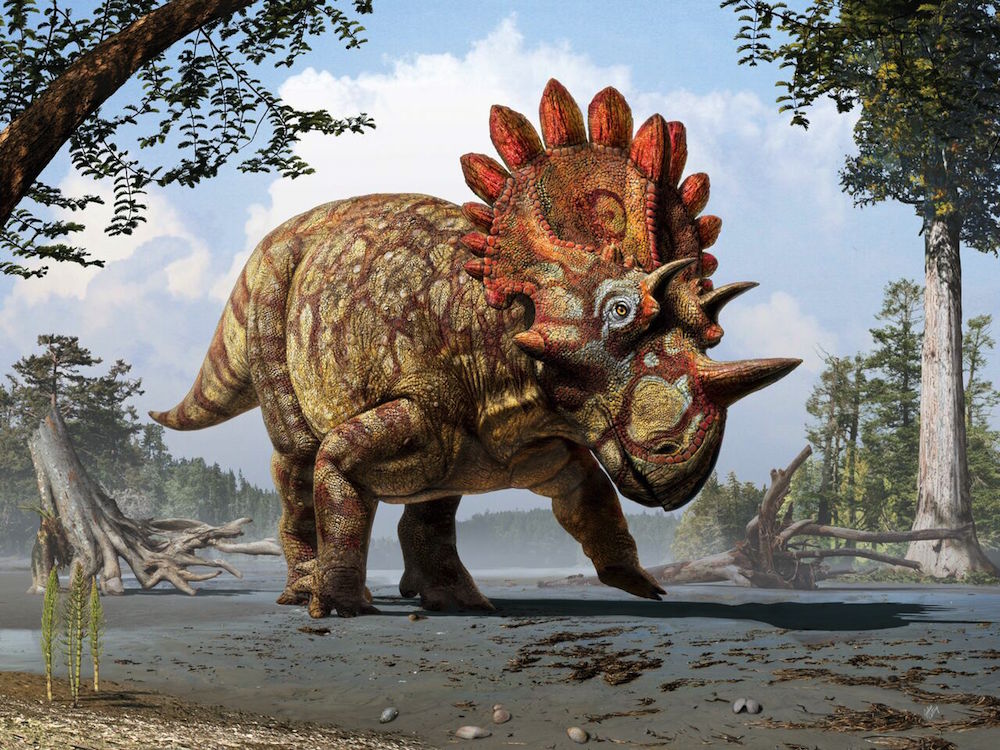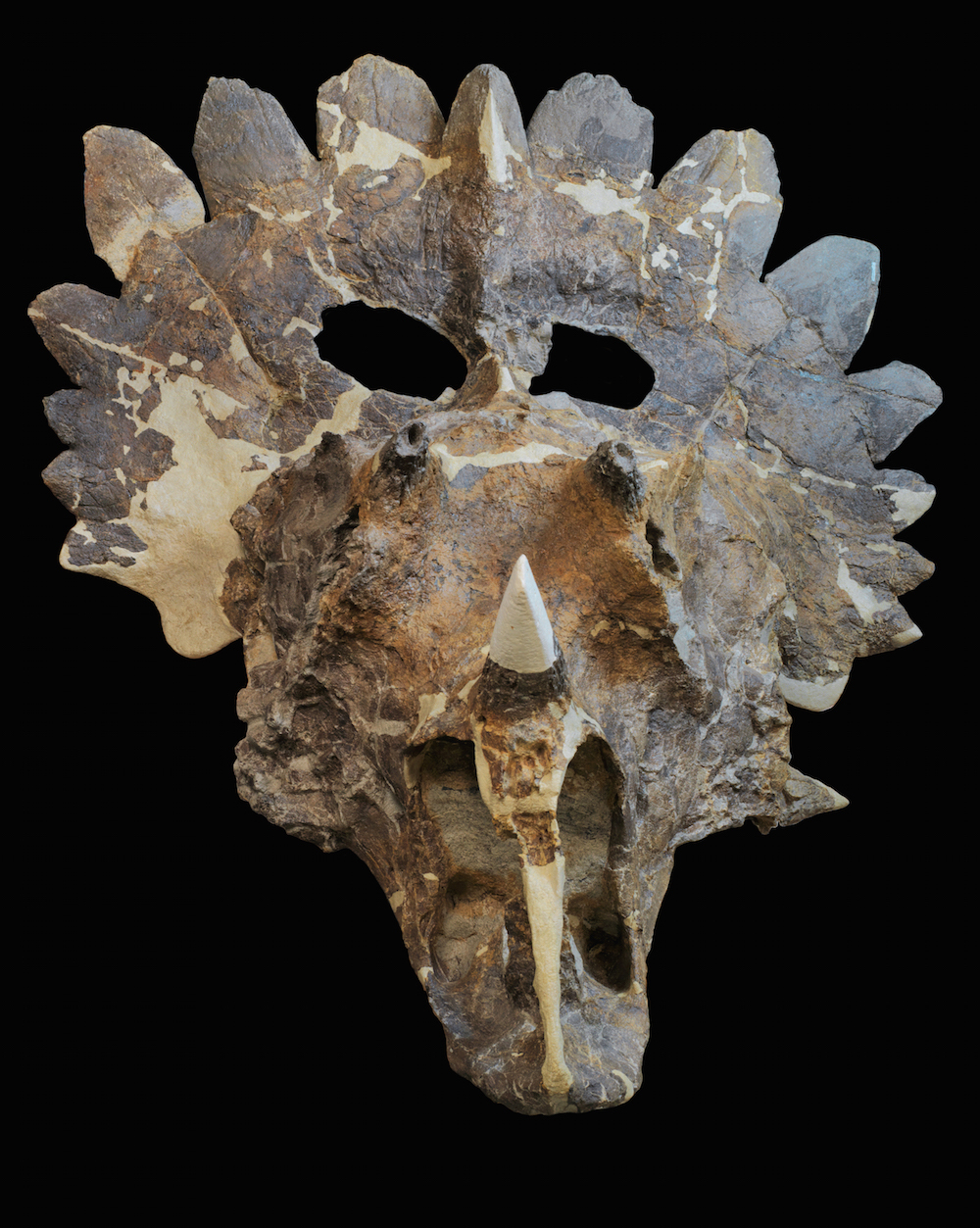What a Face! 'Hellboy' Dino Sported Head Crown, Teeny Eye Horns

About 70 million years ago, a bizarre-looking relative of Triceratops with a crownlike frill, tall nose horn and tiny eye horns tread over the ancient landscape of southeastern Alberta, a new study finds.
A man named Peter Hews discovered the unusual dinosaur's skull about 10 years ago, after he noticed some bones poking out of a cliff by the Oldman River in Alberta. Researchers excavated and studied the fossil, learning it belonged to an entirely new genus and species of horned dinosaur that was closely related to Triceratops.
Researchers dubbed the unusual horned beast Regaliceratops peterhewsi, from the Latin "regalis," meaning royal, in honor of the dinosaur's unique crowned frill, as well as after Canada's Royal Tyrrell Museum of Palaeontology, the researchers said in the study. The Greek word "ceratops" means "horned face." [Tiny & Old: Images of 'Triceratops' Ancestors]
But the dinosaur's nickname, "Hellboy," is far more popular, the researchers said.
Naming aside, the skull is the first evidence that horned dinosaurs lived in that particular geographic region of Alberta, said Caleb Brown, a paleobiologist at the Royal Tyrrell Museum of Palaeontology.
"However, it was not until the specimen was being slowly prepared from the rocks in the laboratory that the full anatomy was uncovered, and the bizarre suite of characters revealed," Brown said in a statement. "Once it was prepared, it was obviously a new species, and an unexpected one at that. Many horned-dinosaur researchers who visited the museum did a double take when they first saw it in the laboratory."
The specimen is so unique, a person standing a football field away could easily tell that it's a new species, Brown joked. He pointed out the distinctive size and shape of its facial horns and the shieldlike frill on the back of its skull.
Get the world’s most fascinating discoveries delivered straight to your inbox.
In fact, Regaliceratops peterhewsi is fairly similar to Triceratops, except that its nose is tall and the two horns over its eyes are "almost comically small," Brown said. But the frill on its head is by far the most impressive feature, he said. It looks like a halo of large, pentagonal plates, and one central spike, radiating outward.
"The combined result looks like a crown," Brown said.
The newfound dinosaur also has an intriguing combination of short and long horns. Researchers usually categorize horned dinosaurs into one of two groups: the Chasmosaurines, which have a small horn over the nose, large horns over the eyes and a long frill; and the Centrosaurines, animals with a large nose horn, small eye horns and a short frill.
"This new species is a Chasmosaurine, but it has ornamentation more similar to Centrosaurines," Brown said in the statement. "It also comes from a time period following the extinction of the Centrosaurines."
R. peterhewsi is the first example of a horned dinosaur showing evolutionary convergence, meaning that these two groups developed similar features independently of each other.
The researchers plan to look for more R. peterhewsi fossils. In the meantime, they're making digital reconstructions of the skull, which is deformed after spending 70 million years in the Rocky Mountain foothills.
"This discovery also suggests that there are likely more horned dinosaurs out there that we just have not found yet, so we will also be looking for other new species," Brown said.
The finding was published online today (June 4) in the journal Current Biology.
Follow Laura Geggel on Twitter @LauraGeggel. Follow Live Science @livescience, Facebook & Google+. Original article on Live Science.

Laura is the managing editor at Live Science. She also runs the archaeology section and the Life's Little Mysteries series. Her work has appeared in The New York Times, Scholastic, Popular Science and Spectrum, a site on autism research. She has won multiple awards from the Society of Professional Journalists and the Washington Newspaper Publishers Association for her reporting at a weekly newspaper near Seattle. Laura holds a bachelor's degree in English literature and psychology from Washington University in St. Louis and a master's degree in science writing from NYU.




